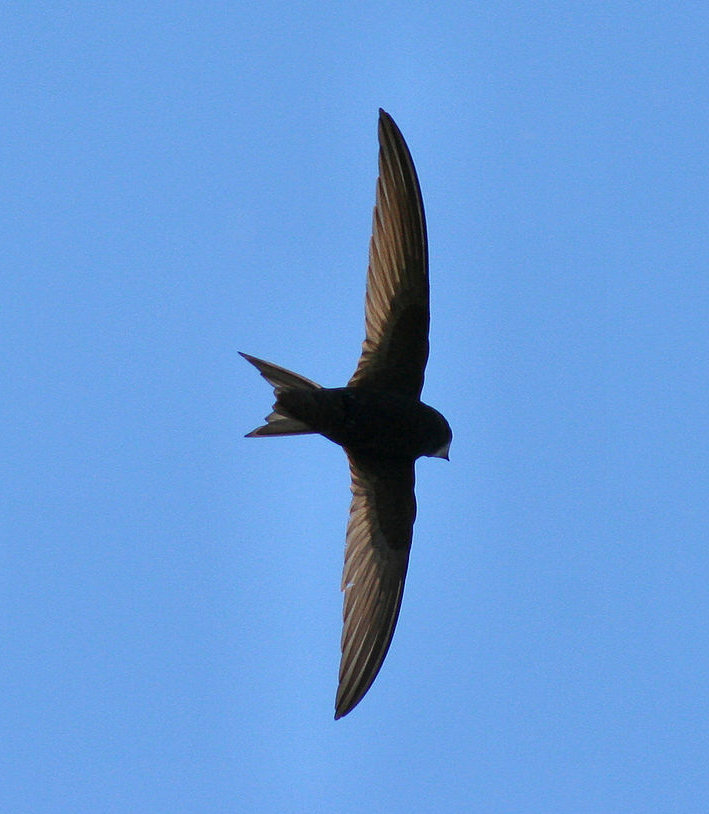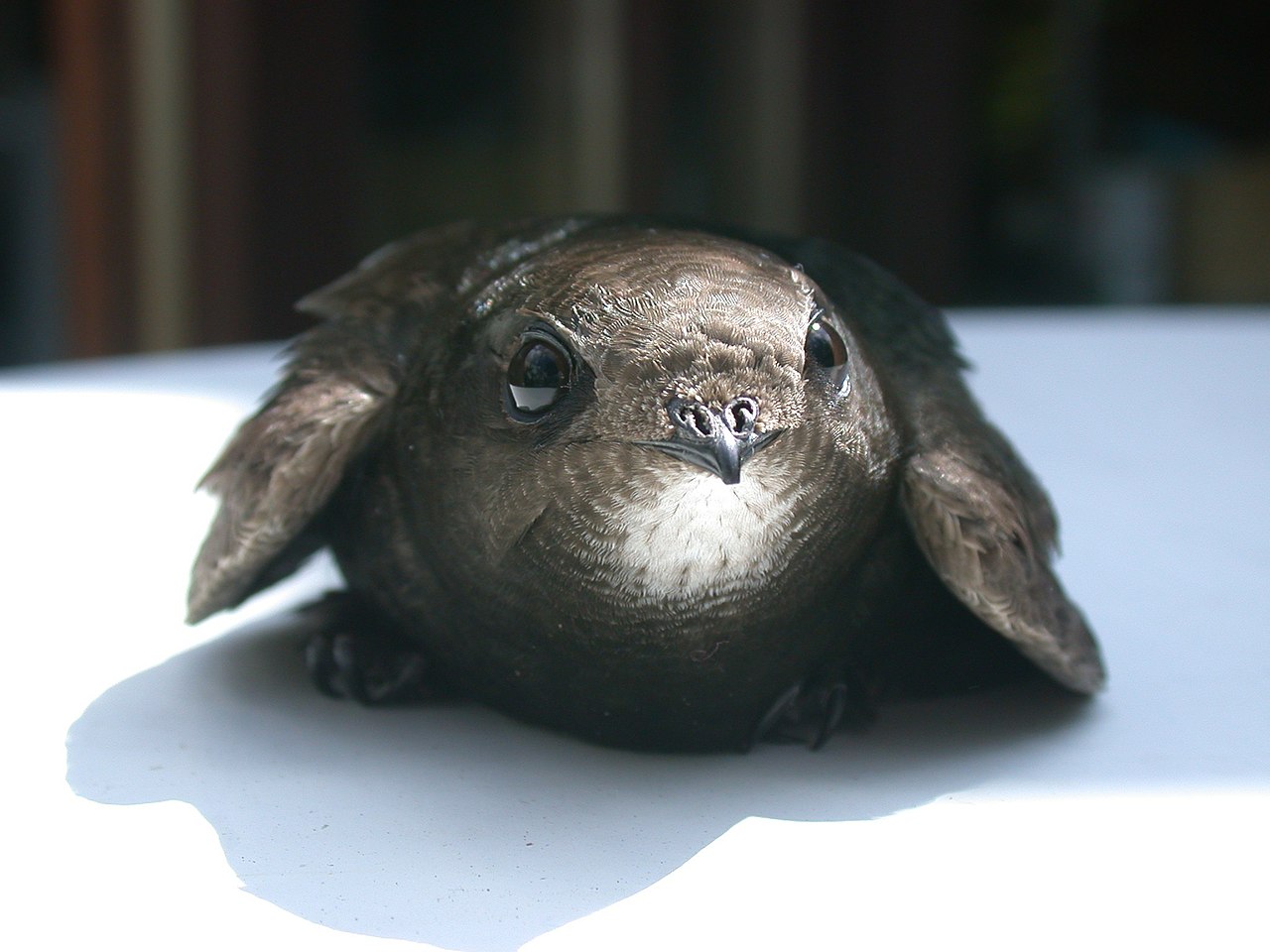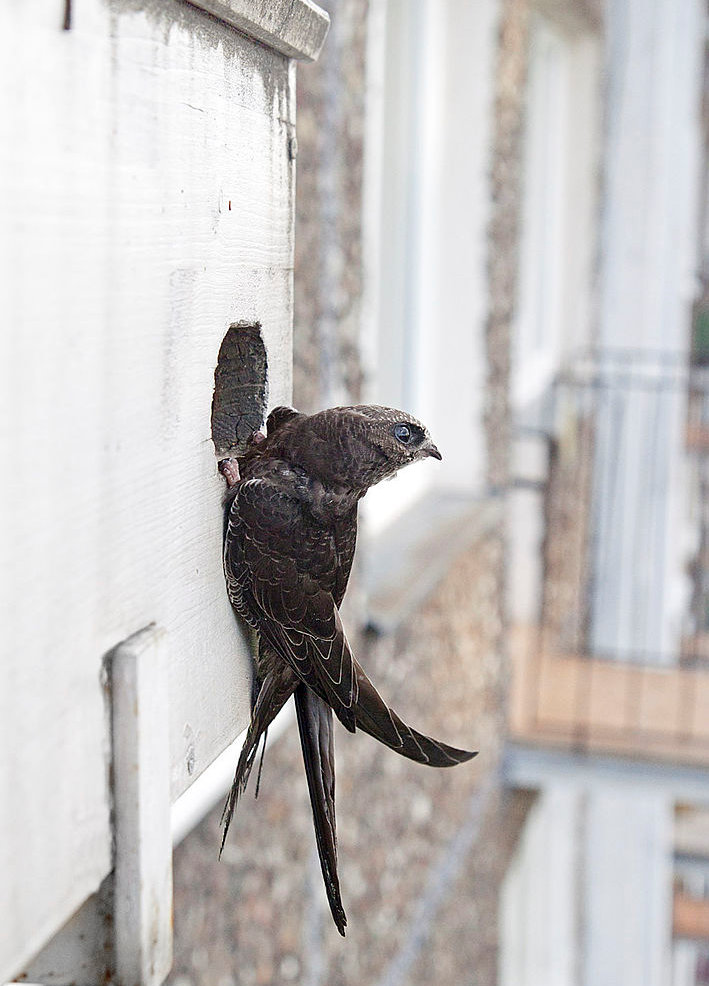Garden Wildlife
Garden Wildlife


Swift Apus apus
Swifts are charismatic and highly social high-fliers spending almost all their lives in the air. They are summer visitors from southern Africa, and unfortunately in severe decline. Swifts are recorded from about 6% of our gardens.



What do they eat?
Flying insects and ballooning spiders caught on the wing. They have specially adapted wide mouths to make capture easier.
Where do they breed?
Swifts arrive in Britain and Ireland in late April and bring up one brood of up to 3 eggs from May to August. They preferentially nest in colonies in high buildings under eaves. Famously, swifts have nested for many years in the tower of the Oxford University Natural History Museum where they have been studied since 1945.
Swift nesting boxes are available from several outlets and can be fixed under the roof overhang. For new builds and conversions, special terracotta or concrete swift nest bricks can be embedded into walls.
What do they do?
Swifts fly at up to 70 mph and can cover hundreds of kilometres in a day while feeding and perhaps 200,000 miles in a lifetime. They even sleep on the wing (except when nesting) when they can shut down half of their brain in sleep alternately. While they are amazing acrobats in the air, they are very clumsy on land.
How are they doing?
Badly. Swifts have declined in Britain and Ireland by about 75% since 1995 and are now on the Red list of conservation concern. In 2016 there were thought to be between 43 and 75 thousand pairs. Swifts are very dependent on good numbers of flying insects, and there is worrying evidence of a global decline in insect numbers and biomass.
Finding out more:
BTO profile on swift
RSPB profile on swift
Action for Swifts blogspot
Wildlife Trust call for action for high-flying birds
Page written and compiled by Steve Head
What do they look like?
Swifts are medium sized (16cm) birds with deep sooty black plumage all over except for a not very obvious white bib. They are easily recognised by the scythe or anchor-shaped wings and much shorter forked tail than the swallow.
The continuous dodging and sweeping flight of groups of swifts high above is very characteristic.
What do they sound like?
Swifts make a piercing high-pitched scream in flight that can’t be mistaken for any other bird.
Irish Wildlife Sounds, XC666909. Accessible at www.xeno-canto.org/666909.
Irish Wildlife Sounds, XC666905. Accessible at www.xeno-canto.org/666905.
Swift Apus apus
Swifts are charismatic and highly social high-fliers spending almost all their lives in the air. They are summer visitors from southern Africa, and unfortunately in severe decline. Swifts are recorded from about 6% of our gardens.



What do they look like?
Swifts are medium sized (16cm) birds with deep sooty black plumage all over except for a not very obvious white bib. They are easily recognised by the scythe or anchor-shaped wings and much shorter forked tail than the swallow.
The continuous dodging and sweeping flight of groups of swifts high above is very characteristic.
What do they sound like?
Swifts make a piercing high-pitched scream in flight that can’t be mistaken for any other bird.
What do they eat?
Flying insects and ballooning spiders caught on the wing. They have specially adapted wide mouths to make capture easier.
Where do they breed?
Swifts arrive in Britain and Ireland in late April and bring up one brood of up to 3 eggs from May to August. They preferentially nest in colonies in high buildings under eaves. Famously, swifts have nested for many years in the tower of the Oxford University Natural History Museum where they have been studied since 1945.
Swift nesting boxes are available from several outlets and can be fixed under the roof overhang. For new builds and conversions, special terracotta or concrete swift nest bricks can be embedded into walls.
What do they do?
Swifts fly at up to 70 mph and can cover hundreds of kilometres in a day while feeding and perhaps 200,000 miles in a lifetime. They even sleep on the wing (except when nesting) when they can shut down half of their brain in sleep alternately. While they are amazing acrobats in the air, they are very clumsy on land.
How are they doing?
Badly. Swifts have declined in Britain and Ireland by about 75% since 1995 and are now on the Red list of conservation concern. In 2016 there were thought to be between 43 and 75 thousand pairs. Swifts are very dependent on good numbers of flying insects, and there is worrying evidence of a global decline in insect numbers and biomass.
Finding out more:
Action for Swifts blogspot
Page written and compiled by Steve Head
























